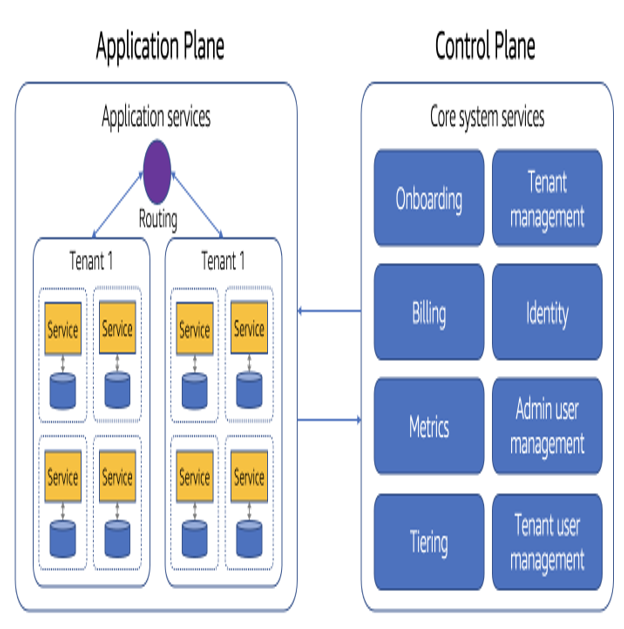Full Stack Silo Considerations
Teams that opt for a full stack silo model, will need to consider some of the nuances that come with this model. There are definitely pros and cons to this approach that you’ll want to add to your mental model when selecting this deployment model. The sections that follow provide a breakdown of some of the key design, build, and deployment considerations that are associated with the full stack silo deployment model.
Control Plane Complexity
As you may recall, I have described all SaaS architectures as having control and application planes where our tenant environments live in the application plane and are centrally managed by the control plane. Now, with the full stack silo model, you have to consider how the distributed nature of the full stack model will influence the complexity of your control plane.
In Figure 3-4, you can see an example of a full stack silo deployment that highlights some of the elements that come with building and managing this model. Since our solution is running in a silo per tenant model, the application plane must support completely separate environments for each tenant. Instead of interacting with a single, shared resource, our control plane must have some awareness of each of these tenant siloes. This inherently adds complexity to our control plane, which now must be able to operate each of these separate environments.

Figure 3-4. Managing and operating a full stack silo
Imagine implementing tenant onboarding in this example. The addition of each new tenant to this environment must fully provision and configure each siloed tenant environment. This also complicates any tooling that may need to monitor and manage the health of tenant environments. Your control plane code must know where each tenant environment can be found and be authorized to access each tenant silo. Any operational tooling that you have that is used to manage infrastructure resources will also need to deal with the larger, more distributed footprint of these tenant environments, which could make troubleshooting and managing infrastructure resources more unwieldy. Any tooling you’ve created to centralized metrics, logs, and analytics for your tenants will also need to be able to aggregate the data from these separate tenant environments. Deployment of application updates is also more complicated in this model. Your DevOps code will have to roll out updates to each tenant silo.
There are likely more complexities to cover here. However, the theme is that the distributed nature of the full stack silo model touches many of the moving parts of your control plane experience, adding complexity that may not be as pronounced in other deployment models. While the challenges here are all manageable, it definitely will take extra effort to create a fully unified view of management and operations for any full stack silo environment.
